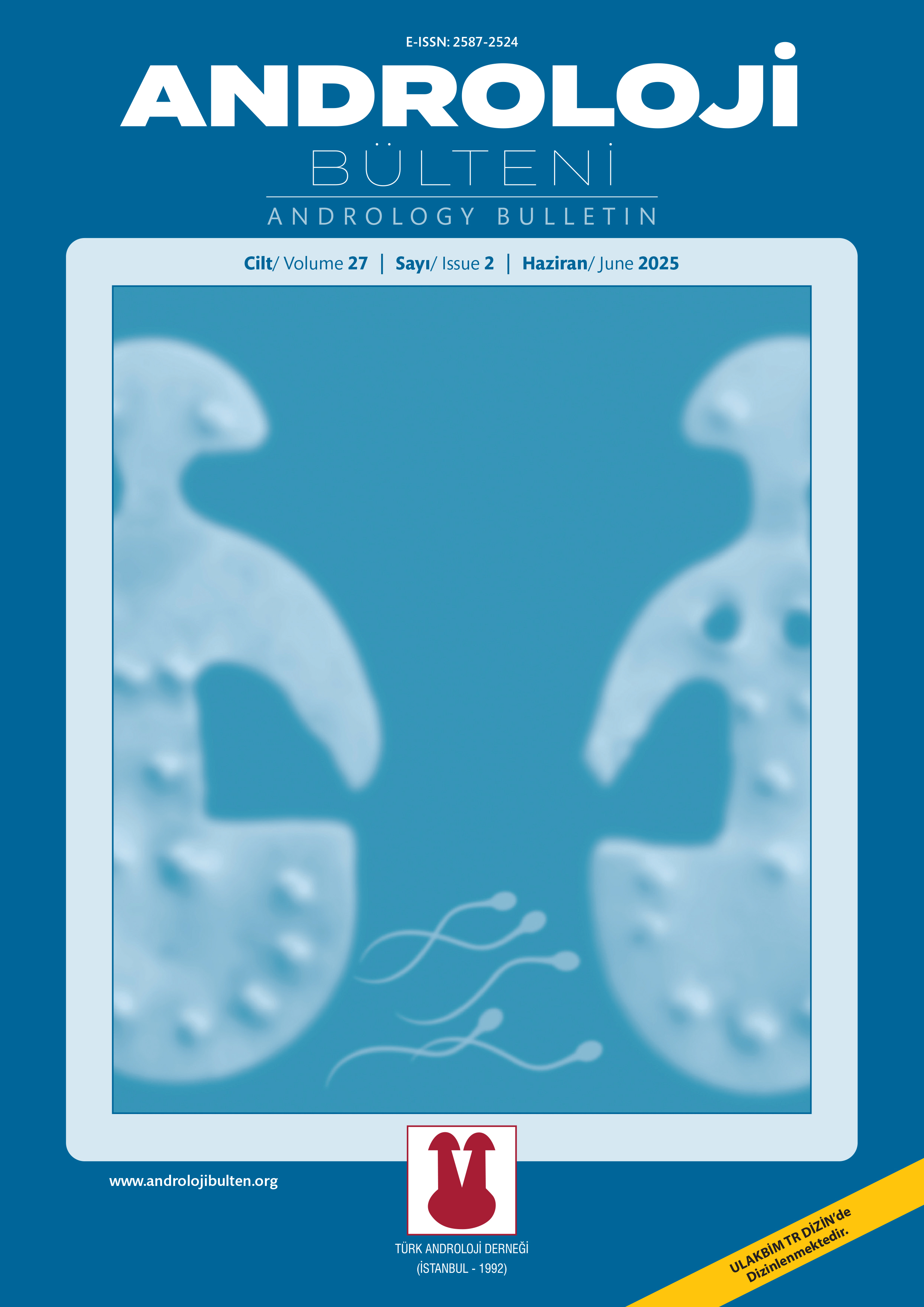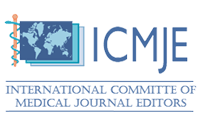
Bu derginin içeriği Creative Commons Atıf-GayriTicari 4.0 Uluslararası Lisansı kapsamında lisanslanmıştır.
Adolesanlarda testis torsiyonu ve epididimo-orşit tanısında hematolojik parametrelerin öngörücü rolü
Ufuk Çağlar, Oğuzhan Yıldız, Ali Ayrancı, Mücahit Gelmiş, Ömer Sarılar, Faruk OzgorS.B.Ü Haseki Eğitim ve Araştırma Hastanesi, Üroloji Kliniği, İstanbul, TürkiyeAMAÇ: Bu çalışmanın amacı adolesanlarda epididimo-orşit ve testis torsiyonunun hematolojik para-metreler üzerine etkilerini değerlendirmektir.
GEREÇ ve YÖNTEMLER: 2018-2023 yılları arasında üçüncü basamak sağlık kuruluşuna akut skrotal ağrı şikayeti ile başvuran hastaların verileri retrospektif olarak değerlendirildi. Epididimo-orşit ve testis torsi-yonu tanısı alan adolesan hastalar çalışmaya dahil edildi. Tam kan sayımı parametreleri (Nöt-rofil, lenfosit, monosit, trombosit sayıları ve ortalama trombosit hacmi) ve inflamasyon belir-teçleri (LMR, NLR, PLR, SII indeksi, SIRI indeksi) testis torsiyonu ve epididimo-orşit grup-ları arasında karşılaştırıldı. Ayrıca, testis torsiyonu olan hastaların verileri testis fiksasyonu yapılanlar ile orşiektomi yapılanlar arasında karşılaştırıldı.
BULGULAR: Kırk hasta testis torsiyonu grubunda ve 54 hasta epididimo-orşit grubundaydı. Ortalama len-fosit ve trombosit sayıları epididimo-orşit grubunda istatistiksel olarak anlamlı derecede yük-sekti (sırasıyla p=0.001 ve p=0.008). Medyan nötrofil sayısı torsiyon grubunda daha yüksekti (p=0.001). Medyan LMR değeri epididimo-orşit grubunda istatistiksel olarak daha yüksek-ken, medyan NLR ve medyan PLR değerleri torsiyon grubunda daha yüksekti (sırasıyla p=0,003, p=0,001 ve p=0,019). Ortanca SII ve SIRI değerleri torsiyon grubunda istatistiksel olarak anlamlı derecede yüksekti. Orşiektomi grubunda medyan monosit sayısı fiksasyon grubuna kıyasla anlamlı derecede yüksekti (p=0,001). Ortanca LMR değeri fiksasyon gru-bunda 4.1 iken orşiektomi grubunda 2.2 idi (p=0.025). Ortanca SIRI değeri fiksasyon gru-bunda 1.9 iken orşiektomi grubunda 4.6 idi (p=0.012).
SONUÇ: Testis torsiyonu inflamasyon dışında iskemik bir süreç olduğu için erken dönemde hemato lojik parametreleri epididimo-orşite göre daha fazla etkilemektedir. Torsiyon hastalarında monosit sayısı, LMR değeri ve SIRI indeksi orşiektomi olasılığını öngörebilir.
Predictive role of hematological parameters in testicular torsion and epididymo-orchitis in adolescents
Ufuk Çağlar, Oğuzhan Yıldız, Ali Ayrancı, Mücahit Gelmiş, Ömer Sarılar, Faruk OzgorDepartment of Urology, Haseki Training and Research Hospital, Istanbul, TürkiyeOBJECTIVE: This study aimed to evaluate the effects of epididymo-orchitis and testicular torsion on hematological parameters in adolescents.
MATRERIAL and METHODS: The data of the patients who applied to the tertiary health care institution between 2018 and 2023 with complaints of acute scrotal pain were evaluated retrospectively. Adolescent patients diagnosed with epididymo-orchitis and testicular torsion were included in the study. Complete blood count parameters (Neutrophil, lymphocyte, monocyte, platelet counts, and mean platelet volume) and inflammation markers (LMR, NLR, PLR, SII index, SIRI index) were compared between testicular torsion and epi-didymo-orchitis groups. In addition, the data of patients with testicular torsion were compared be-tween those with testicular fixation and those with orchiectomy.
RESULTS: Forty patients were in the testicular torsion group, and 54 were in the epididymo-orchitis group. Mean lymphocyte counts and platelet counts were statistically significantly higher in the epididymo-orchitis group (p=0.001 and p=0.008, respectively). The median neutrophil count was higher in the torsion group (p=0.001). The median LMR value was statistically higher in the epididymo-orchitis group, while median NLR and median PLR values were higher in the torsion group (p=0.003, p=0.001, and p=0.019, respectively). The median SII and SIRI values were statistically significantly higher in the torsion group. The median monocyte count was significantly higher in the orchiectomy group com-pared to the fixation group (p=0.001). The median LMR value was 4.1 in the fixation group and 2.2 in the orchiectomy group (p=0.025). The median SIRI value was 1.9 in the fixation group and 4.6 in the orchiectomy group (p=0.012).
CONCLUSION: Since testicular torsion is an ischemic process other than inflammation, it affects hematologic parame-ters more than epididymo-orchitis in the early period. In torsion patients, monocyte count, LMR value and SIRI index may predict the possibility of orchiectomy.
Makale Dili: İngilizce
(17 kere indirildi)













